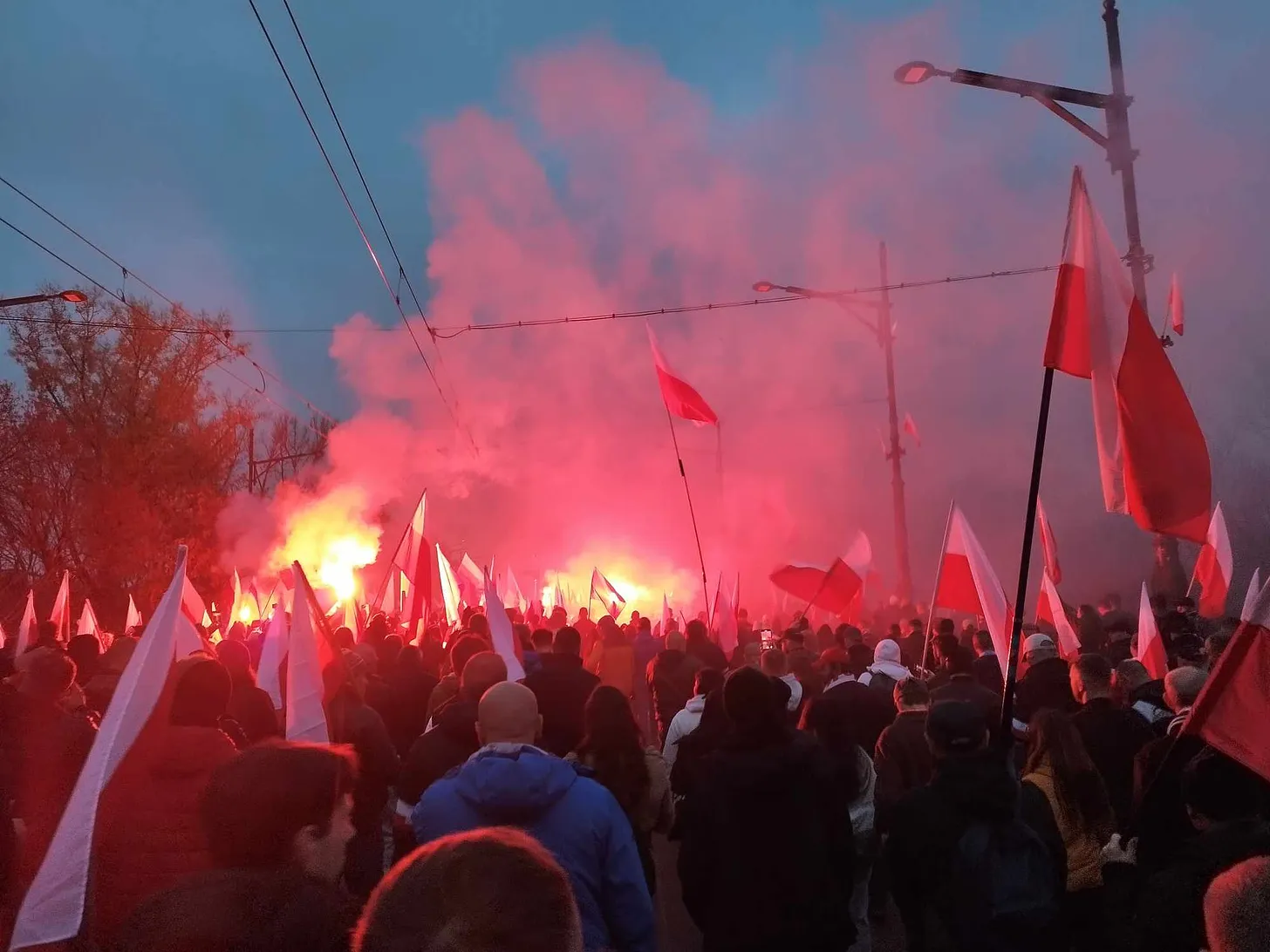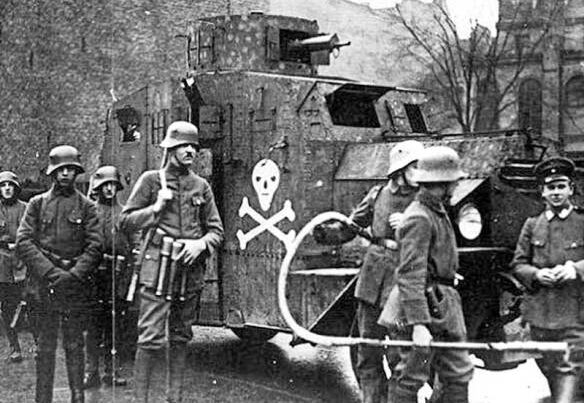The 13th Polish Independence Day March took place on November 11th with tens of thousands (possibly a six-figure crowd if some estimates are to be believed) taking to the streets of Warsaw.
Proceedings began as always with speeches by leaders and prominent figures, setting out what they deemed the most pertinent issues for Polish patriots, conservatives and nationalists. The speeches covered a broad range of themes, as reflected by the various speakers.

The President of the Independence March Association, Bartosz Malewski, emphasised the increasing encroachment by Russia from the east and the EU from the west. “We are well aware that Russia is laying claim to the Polish state. There is no consent on our part!” He added, “We see the European Union moving ever more aggressively towards federalisation. And that means liquidation of nation states. It means the loss of sovereignty.”
One of Konfederacja’s (the Confederation’s) leaders, Krzysztof Bosak, told the huge crowd, “We are united by our attachment to the Polish colours and the Polish state, faith, respect for the Catholic faith, Christian values, which have shaped the foundations of culture and legislation in our country.”
The march has evolved into much more than a celebration of Poland regaining its independence. Chants such as “honour and glory to heroes” and “God, honour, homeland” resonated throughout the afternoon. The glorification of Polish icons Roman Dmowski, Ignacy Paderewski (both instrumental in the nation reestablishing its independence) and Pope John Paul II were prevalent among the banners and songs.
Like every year, anti-communist symbols were dotted throughout the crowd, a theme which unsurprisingly remains a unifying motif amongst all those marching. Then there are the more contemporary topics of opposition, such as abortion, the LGBT agenda, the role of the mainstream media, Polish involvement in the war in Ukraine and external influence from the U.S. and Israel.

A particularly inspiring element of the march is its organic nature, which, in contrast to events such as the pride parades, has no corporate sponsorship or endorsement. Attendees range from the politically radical and more personally invested nationalist groups such as the Nationalist Radical Camp (ONR), Grzegorz Braun’s monarchists party, The Crown (Korona) and Bosak’s Ruch Narodowy (National Movement) to patriotic families with toddlers in tow. There are naturally disagreements in stances but respect for the day tends to ensure differences are put aside. The shared sense of a common ideology forges a spirit of togetherness in the vast throng.
Leftist media attempt, as always, to demonise attendees, putting whatever negative spin they can on the event but it has been non-violent for a long time. Even when things got spicy in the early years, it was almost solely due to agent provocateurs and deliberate police heavy-handedness. The biggest selling left-wing newspaper, Gazeta Wyborcza, in a desperate effort to spark friction, blacked up a white journalist in 2016 in the hope he might agitate crowds into rage. Two years ago on the march route, an EU and rainbow flag were hung from a balcony and a cameraman positioned three balconies along. Thankfully there were no such attempted actions this year, as far as I am aware. Another leftist media trick is to deflate the estimated number of attendees, in an effort to downplay the influence of patriots and nationalists as a group. Warsaw mayor and darling of the Polish left Rafał Trzaskowski, who held a private meeting a few days prior to the march with George Soros’ son, stated that there were 40,000 people in attendance. The drone footage alone dispels that claim.
It will be interesting to see what lies ahead for the march with the new centre-left government taking the reins. The outgoing centre-right Law and Justice had good reason to placate the supporters of the march. Donald Tusk and his new government will have very few voters amongst the march-goers, and thus have no reason to appease them.

This Year’s Theme
The march has come to symbolise something which nationalists beyond Poland can aspire to bring about in their own countries. Poland’s history has embedded a desire in its people to preserve their nation and culture, and as such is a source of inspiration. Indeed, the Polish Independence Day March gives the West the belief that all is not lost yet.









